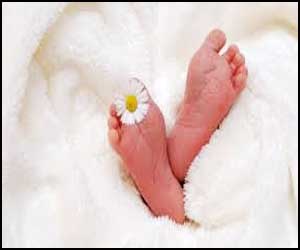- Home
- Editorial
- News
- Practice Guidelines
- Anesthesiology Guidelines
- Cancer Guidelines
- Cardiac Sciences Guidelines
- Critical Care Guidelines
- Dentistry Guidelines
- Dermatology Guidelines
- Diabetes and Endo Guidelines
- Diagnostics Guidelines
- ENT Guidelines
- Featured Practice Guidelines
- Gastroenterology Guidelines
- Geriatrics Guidelines
- Medicine Guidelines
- Nephrology Guidelines
- Neurosciences Guidelines
- Obs and Gynae Guidelines
- Ophthalmology Guidelines
- Orthopaedics Guidelines
- Paediatrics Guidelines
- Psychiatry Guidelines
- Pulmonology Guidelines
- Radiology Guidelines
- Surgery Guidelines
- Urology Guidelines
Deliveries conducted at home three times more dangerous than hospital deliveries

According to researchers from Ben-Gurion University of the Negev (BGU) and its affiliated Soroka University Medical Center, Women who give birth in non-hospital settings are three times more likely to encounter complications and perinatal mortality compared with hospital births.
The study, presented in Las Vegas at the Society for Maternal-Fetal Medicine's 39th Annual Pregnancy Meeting in February, compared the births of 3,580 women who delivered babies in non-hospital settings in Israel to some 240,000 mothers who gave birth at Soroka between 1991 and 2014.
According to Prof. Eyal Sheiner, M.D., chair of the Obstetrics and Gynecology Department at Soroka and vice dean for student affairs at BGU's Faculty of Health Sciences (FOHS), "Approximately 15 out of every 1,000 babies born in non-hospital settings are at risk of death, compared to only five out of every1,000 babies born in hospitals." Dr Tamar Weinstock of BGU's FOHS and Dr Gil Gutvirtz of Soroka also participated in the research.
When accounting for variables including the mother's existing health, age, health habits such as smoking, and ethnic background, the occurrence of a still-born infant was significant, with a risk 2.6 times higher for infant mortality compared with patients who delivered in hospitals.
"This study matches the findings of larger studies conducted in the United States and confirmed our hypothesis that childbirth in non-hospital settings is far more dangerous than in hospitals," says Prof. Sheiner. "There is no question that a hospital provides the most secure environment to give birth, both for mothers and their babies. Even with the advances in modern medicine, childbirth is still traumatic for both the mother and child and it is critical to be prepared for any scenario.
"Once-upon-a-time, the difference between home and hospital for giving birth was less important because of our ancestors' limited understanding of medicine, but today there is a quantum difference," he adds. "Tracking both the mother's and baby's progress, and vital signs in real time, as well as immediate access to emergency treatment and operating rooms, gives the medical team a far better chance to effectively navigate a difficult birth situation."

Disclaimer: This site is primarily intended for healthcare professionals. Any content/information on this website does not replace the advice of medical and/or health professionals and should not be construed as medical/diagnostic advice/endorsement or prescription. Use of this site is subject to our terms of use, privacy policy, advertisement policy. © 2020 Minerva Medical Treatment Pvt Ltd